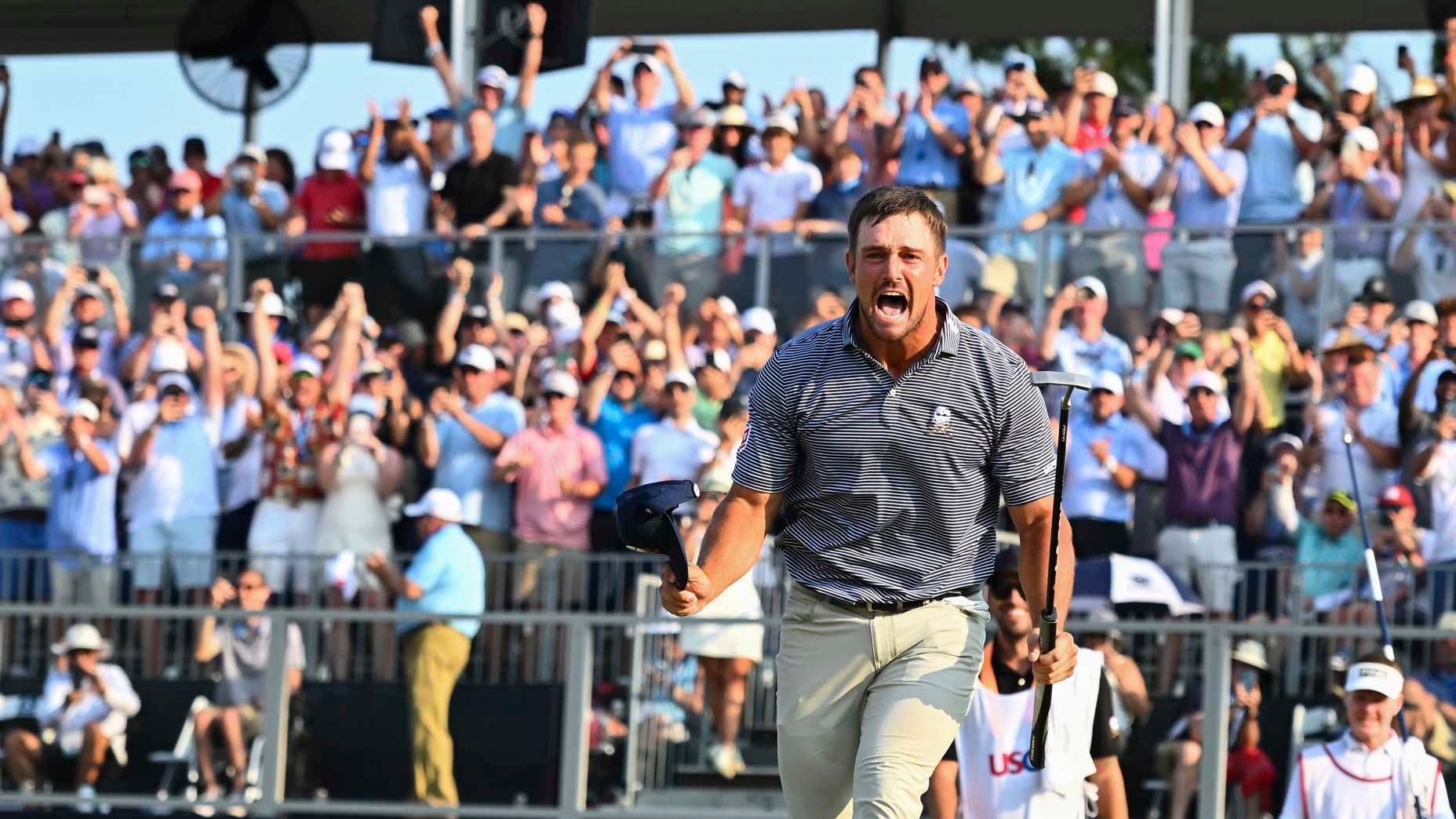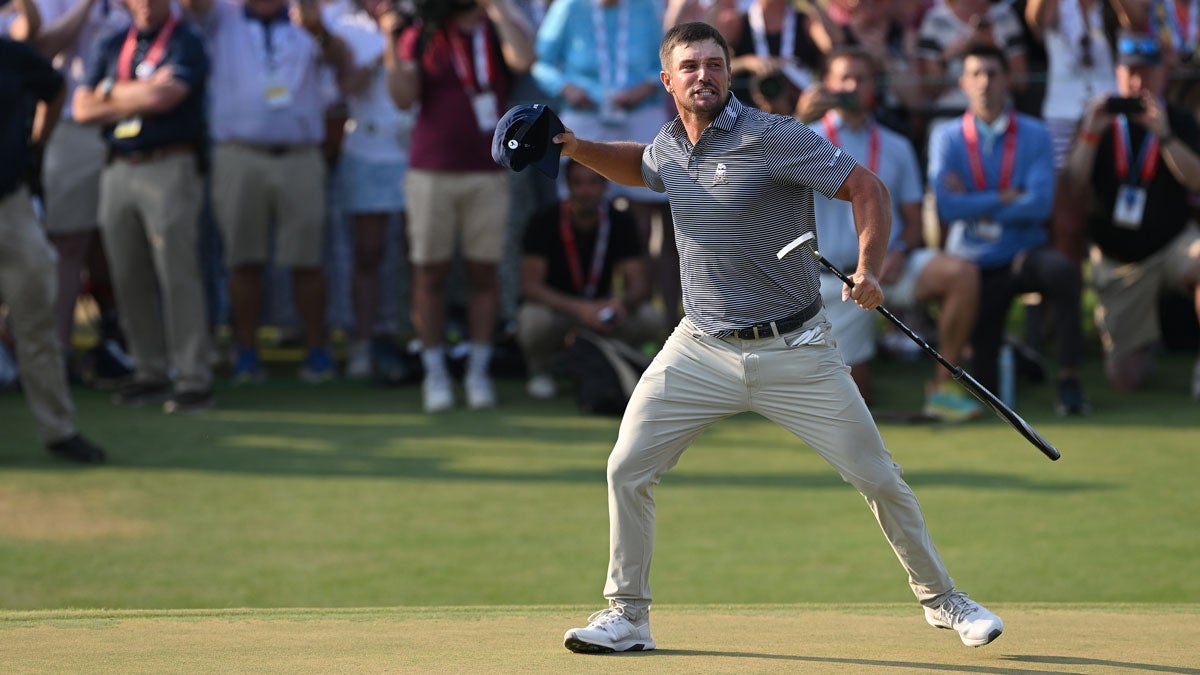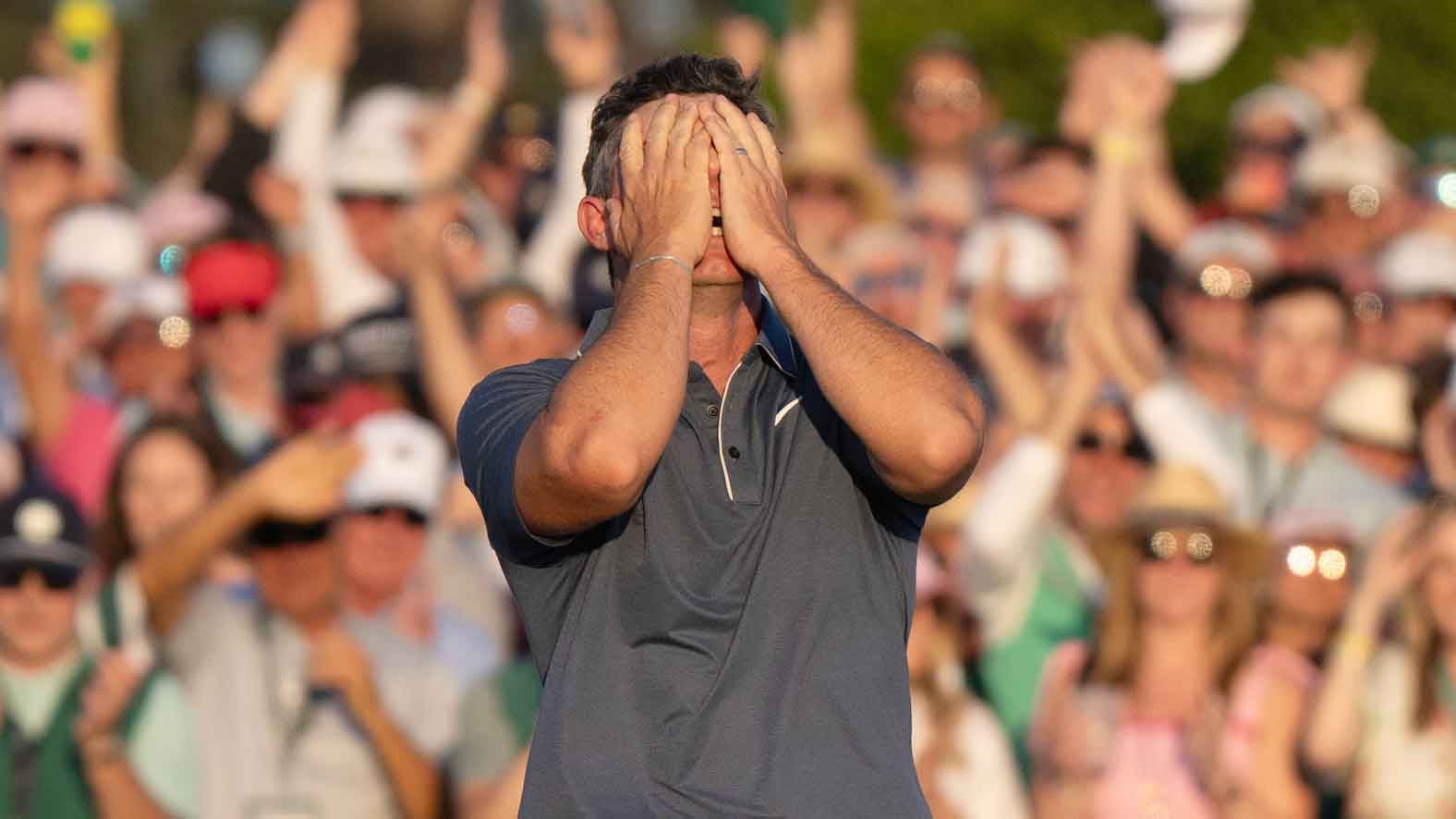PINEHURST, N.C. — You could start a museum with the painful misses of golf’s most lovable losers. Those players who finish agonizingly short do so for a reason: their week’s worth of shots building into a single swing that, unfortunately for them, becomes the fatal bullet. The images of those moments make up the portraits of their careers. Phil Mickelson’s hands clasped atop his head at Winged Foot. Greg Norman wilting to the ground at Augusta National. Jordan Spieth dropping a ball — a second ball — at Amen Corner in 2016.
For Rory McIlroy, entering the final round of the U.S. Open, there was really just one such moment — that toe-hooked tee ball on 10 at the 2011 Masters. The visual of McIlroy up against the bushes of white cabins with black shutters tells you about a painful corner of his career. One swing unraveled a spool of yarn that day, and we all still think about it 13 years on. It now has a partner in the museum. One that isn’t counted in yards or feet. Just 30 inches.
“For him to miss that putt,” Bryson DeChambeau said Sunday night of McIlroy’s lip-out on 16, ”I’d never wish it on anybody.”
The U.S. Open was just getting started.
BECAUSE OF THE WAY Pinehurst No. 2 is routed, there was a connectivity to the final stages of the U.S. Open. The 13th and 14th holes run alongside each other, in opposite directions. The 16th fairway crosses adjacent to the 15th green. The 17th hole looks out over the 16th fairway. The 18th tee is a vantage point for the holes preceding it.
And so as a memorable week at Pinehurst crept toward its close, McIlroy was observant, peering at the group behind him — led by DeChambeau. He watched his competition from the side of the 14th green, then again from the 15th tee, and as he walked through the 16th fairway. McIlroy said early in the week he was hoping to be stoic at Pinehurst. To wade through the bad breaks that this cranked up tournament offers. Like the 30-inch putt you have to play outside the hole.
Shot No. 1 of the final 31 minutes was the kind of putt that McIlroy had made 496 out of 496 times this season. But on the 497th try, amid the toughest conditions of the season, McIlroy’s ball rimmed the edge of the cup and refused to fall. The grandstand behind him recoiled. One volunteer held her hands in the air toward the gallery, but craned her neck to watch. Her jaw had dropped. Everyone’s jaw had dropped. McIlory dropped a stroke as he tapped in for Shot No. 2. Tie ballgame, six under.
From the fairway, DeChambeau watched intently. He began the day with a three-shot lead, but McIlroy had stolen it from him. And then granted him a chance to take it back. He hit a full wedge to 22 feet, below the hole. He was following the same blueprint as the man ahead of him. Hit it high with a draw and stop it on these impossible greens. That’s Shot No. 3.
Golf shots are independent strikes, of course, and we often treat them such. Strokes Gained is the most popular metric in the sport, and was fashioned to separate the value of one swing from the next. But damnit if shots aren’t connected on a Sunday afternoon. McIlroy’s next swing came with a 6-iron, bounced four times on grass before falling into sand. Does he pull Shot No. 4 into the bunker if he hadn’t three-putted? We (and he) are only left to wonder.
As McIlroy rehearsed his bunker swing, DeChambeau was stalking. Paige Mackenzie, for the Golf Channel, said DeChambeau was treating the end of this tournament like a predator. He had stayed patient all week — very un-DeChambeau-like — but admitted later he was chasing birdies now. When Shot No. 5 slid by the hole, DeChambeau dropped to his knees, a drama king. Stoicism in the left bunker on 17, fidgety on the 16th green.
Shot 6: McIlroy splashed out of the sand.
Shot 7: DeChambeau taps in for par. His 29-inch putt fell into the heart of the cup, like putts of that length are supposed to. But 30-inch U.S. Open putts are not normal.
Shot 8: McIlroy taps in for his par. On to 18. Only Patrick Cantlay, who had recently just exited the fight, still held the honor, which meant McIlroy would have to wait … and watch some more. A couple thousand pairs of eyes were locked on DeChambeau, many of them in the grandstand left of 18, echoing U-S-A, U-S-A out over McIlroy’s head, at the American in the distance. Silently, patiently, perhaps stewingly, McIlroy made smooth rehearsal swings with his driver. And just a handful of seconds after DeChambeau’s approach sniped the 17th green and rolled to 18 feet (Shot No. 9), McIlroy wailed on his driver. Shot No. 10, soaring long and left.
These two men danced a disjointed tango, 500 feet apart. They had started the day about 30 feet from each other on the driving range. McIlroy headed out first, beginning the trek to 1 just as DeChambeau switched heads on his driver. (Only one player on the planet would make such a swap 20 minutes before the final round of the U.S. Open.)
These two dancers are two of the greatest drivers this sport has ever seen. And on the 18th hole it became clear they were pursuing the same thing: hit the ball so far that it clears everything. DeChambeau finished his third round by bouncing his drive off the grandstand and into a clean angle. We can only assume that McIlroy, who is every bit as long, played Shot No. 10 the same way. (We must assume because he didn’t speak with media after his round.) But Shot No. 10 will stick in his craw for quite a while, too, because he lost at Pinehurst Roulette, his ball coming to rest at the back of a large tuft of wire grass. He stood there, with his hands at his side, for minutes. DeChambeau urged Shot No. 11 up to the hole, a few inches short. Shot No. 12 earned his par.
To have this entire week come down to one of the 75 species of grasses that grow in the sandy areas of Pinehurst No. 2 may feel unfair to some. But that is the protection of the course this week and every week. The incredible speed of its greens is one thing, but that’s the case at the Memorial tournament, too. The firmness of the fairways and the slopey surrounds were another defense, sure, but we’ll see that in July at the Open. The native area grasses are Pinehurst.
Shot No. 13 came just 20 minutes after Shot 1. This sport might be slow and on most Sundays a natural sedative, but anything can happen in 20 minutes on Father’s Day. The only play for McIlroy was a stabbed wedge that skirted up the fairway, short of the green.
‘Sport at its finest’: Bryson vs. Rory became an agonizing U.S. Open brawlBy: Michael Bamberger
Shot No. 14 followed quickly after. DeChambeau’s tee ball hooked hard and left, bouncing off the hip of a volunteer and coming to rest on the edge of a gnarly tree root. Were the volunteer a bit quicker, we may have found a different result, but this was no time to wonder. Not 30 seconds later, McIlroy clipped a pitch from the front side of the green inside four feet. Shot No. 15. Fans Ping-Ponged their gaze back and forth. If it felt frantic at home in your living room, it was equally such in person. DataGolf had determined their odds of winning were virtually the same, offering McIlroy, technically the better player, a 4% advantage.
“Four feet, downhill, breaking to the right,” Brandel Chamblee said from the NBC booth. “That’s not exactly the four-footer you want.” Not when this whole thing kicked off with a shorter version of that same putt.
One-hundred fifty yards back, DeChambeau asked a rules official for TIO relief — he wasn’t far from the edge of the grandstand — a reminder that pros will do whatever they can to use a loophole, but was rightfully granted none. Then he began analyzing if he’d hurt his wrist swinging across the root. Were he playing from the fairway, he could have taken deeper breaths without the laundry list of variables. He could have stared into the setting sun to see McIlroy line up Shot No. 16, another one we could count in inches (just 45). But DeChambeau’s lie didn’t afford him the option of watching. He figured McIlroy would make par.
“Then I heard the moans.”
That was DeChambeau again, speaking about an hour later. “Like a shot of adrenaline got in me. I said, Okay, you can do this.” Shot No. 16 was McIlroy’s second mind-numbing putt, this one grabbing the low edge of the hole and spinning out. Shot No. 17 cleaned up his bogey and a most-depressing 69.
Things happened so fast leading up to that moment, but suddenly each decision felt slow. DeChambeau repeatedly rehearsed a half-swing that could squeeze beneath the tree branch above him. He picked at the pinestraw behind his ball with a tee. He grabbed a club and took a stance, his toes abnormally close to the ball. He loosened his grip — he felt the shot — then stepped back.
His caddie, Greg Bodine, relayed the distance to the front of the green: 115 yards. “It’s a glorified pitch shot,” Bodine said. A second later they were both behind the ball. You could hear yourself breathe.
With Bodine over his shoulder, DeChambeau said only three words, “I got it,” and Bodine rushed out of the way. Caddies may disagree with their player at times but whenever a pro says those words over their ball, it’s time to scram. Shot No. 18 came quick. A hurried punch that screamed across the fairway and into a bunker. McIlroy was busy signing his scorecard, removed from the North Carolina heat, in the basement bowels of the clubhouse, beneath the private partygoers with an unfiltered view on the veranda. But not removed from the sounds of a U.S. Open.
Golf history buffs will remember something similar happened at the 1999 U.S. Open, one of those weeks the golf world will never forget. Mostly because it gave us an everlasting image — of both the longtime, lovable loser (Mickelson) with his face in the hands of Payne Stewart, the champion. That tournament flipped and flopped on those final three holes 25 years ago, just like it did Sunday. Mickelson grabbed the lead on the back nine but bogeyed 16. Stewart then birdied 17. An up-and-down par won the title on 18.
Golf has a way of repeating itself. At Augusta National and St. Andrews and Pinehurst, too. From 54 yards and a sandy lie, DeChambeau’s bunker shot was as exquisite as it was daring. But it had to feel lonely, too. A massive crater of sand with him at the center of it. It would absolutely be the scene of a lovable loser photo, tacked up on the wall of our museum, but instead we have the images of him bolting out of the bunker toward Bodine. The highlight will stick to him and this course and this event in a much happier type of museum. For the purposes of Sunday’s rollercoaster, it was Shot No. 19, but according to DeChambeau, it was something much bigger:
“That bunker shot,” he said, “was the shot of my life.”











